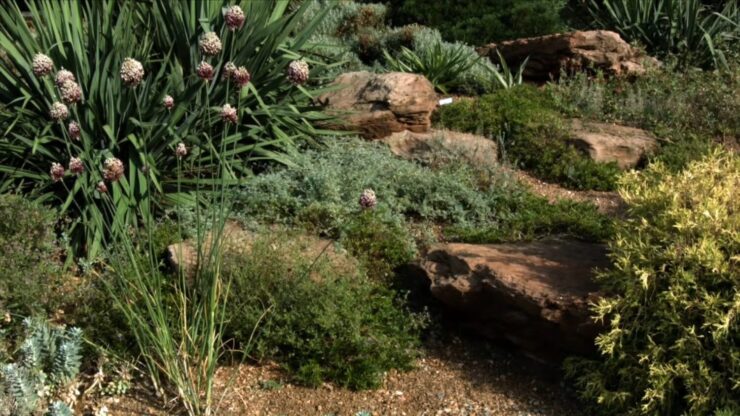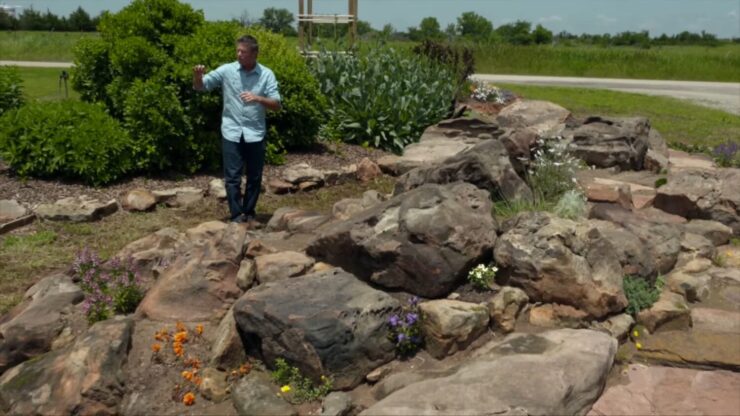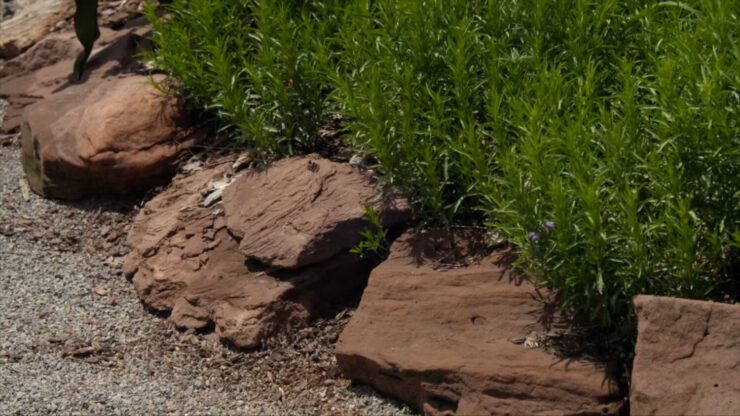When I moved to East Harriet in fall 2001, I arrived on a plane with my nearly 2-year-old son, a small suitcase and two giant boxes of plants extracted from my garden in Seattle.
Our new yard was overgrown, so the plants had to live in my mother’s garden until we could clear some space for them. The following spring I found a multitude of beautiful rocks buried in the backyard.
It was obvious that they were intentionally placed and part of a garden that had not been tended in some time.
A garden without its gardener is quickly reclaimed by Mother Nature. Initially, I placed them around the edges of my growing garden beds as points of interest.
It wasn’t until I joined the Minnesota Chapter of the North American Rock Garden Society (NARGS) years later that I started to appreciate how much more they could contribute once I allowed them to be an integral part of the landscape.
Having gardened in the Pacific Northwest, I garden in Minnesota with an intense zone of denial. This means that I have killed a lot of plants, probably more than I have successfully grown.
I am always on the hunt for something unusual to try. A gardener friend of mine once mentioned that if I wanted great plants, then I needed to join NARGS. “Those people know plants,” she said.
Minnesota, with its hard winters and short growing season, is a great place for rock gardens. Classically, rock gardens have been filled with diverse species of miniature conifers and alpine plants, although more common garden plants can work as well.
Indigenous alpine plants grow high up in the mountains above the tree line. The short alpine growing season lasts about three months, and plants need to grow, bloom and set seed before they freeze again.
As a result, these perennial plants tend to put out abundant flowers in a short period of time. Often the small plants are so covered with flowers that the leaves cannot be seen.
The prime blooming season is April through June, but by learning to creatively combine a variety of small plants in a vertically inclined, rock- sculptured garden design, one can create a tapestry of color and texture that looks beautiful year round.
The majority of alpine plants grow in areas that have loose, gritty, well-draining topsoil.
Growing in between rocks serves to protect the crown of the plant from disturbance and rot as the snow melts, but they develop very long root systems that help them survive exposure to extreme seasonal temperature changes.
In learning about alpine plants and rock gardening I have gained a wealth of knowledge from my fellow NARGS members — not just about plants but, more importantly, about soil.
Rock gardening
Rock gardening offers the opportunity for experimentation in the face of limited space and climate change.
Proper soil, it turns out, is everything. Soil is not glamorous, but if you want to be a successful gardener growing alpine and other rock garden species, then you cannot have enough knowledge about soil.
The interplay between soil and water is critical to plant growth and reproduction but also for plant resistance to extreme temperatures, insects and diseases.
We cannot control the weather, but in a climate like Minnesota, providing the proper below ground dynamics can make all the difference between success and failure in growing something new or something that might be marginally hardy.
If you want to visit a rock garden to see what all the fuss is about, you have a variety of local options. MN-NARGS volunteers donate countless hours to help maintain a beautiful rock garden at the Minnesota Landscape Arboretum.
Closer to home, the Peace Garden in East Harriet was re-designed in the 1980s by MN-NARGS member and renowned gardener Betty Ann Addison.
These are wonderful places to appreciate the potential of rock gardening in a large space, but a lot of space is certainly not required.
Even a sunny Uptown apartment balcony can support an array of blooming alpines, succulents and dwarf conifers in troughs.
Trough gardening can also be adapted to incorporate other hot garden trends such as xeriscaping, fairy gardens and bonsai.
Educational opportunities also abound since small troughs made from lightweight materials can be easily transported.
Styrofoam shipping boxes can be sculpted, painted or coated over with a thin layer of hypertufa material to look like rocks.
MN-NARGS has used these types of troughs to promote rock gardening at the Minnesota State Fair; stop by the booth this fall to ask questions or get to know some great gardeners.
As city dwellers we tend to eschew the broad expanses of turf and cookie-cutter landscapes that have come to represent the stereotype of Midwestern yards.
However, as the population grows, living spaces will continue to shrink, and as the climate becomes more volatile, even our modern city lifestyles will need to adapt.
What will not change is the fundamental human desire to possess an outdoor space that can provide sanctuary from the stresses of our modern world.
No other style of garden offers more opportunity for experimentation in the face of limited space and climate change than rock gardening.
Though creating a rock garden is different from making other sorts of gardens, the techniques and methods involved aren’t difficult.
Learning the basics of rock gardening can unleash your creativity and allow you to build a garden space packed with a diversity of different plants using less space, water, fertilizer and maintenance time than it takes to grow with a similar number of plants in a large perennial border. Beauty on a budget. What is not to like?
Go on and give it a try.














